Optimized Room-Temperature Wollaston Prisms for SESAME
∗ This project is supported by the Department of Energy
• Introduction
One way of achieving the separation of neutron spin states required for SESAME involves the use of magnetic Wollaston Prisms and a geometry that is very similar to the more familiar optimcal Differential Interfernece Contrast (DIC) microscopy. Like their namesake used in optics, the neutron Wollaston prisms use triangular regions that are birefringent. These regions can be created using resistive-wire solenoids yoked in high-permeability µ-metal. The magnetic fields produced by the conductors in the solenoids can be calculated analytically using the Biot-Savart law; however, non-linear effects due to the mu-metal have to be simulated using either Finite Element or Boundary Element methods.

Configuration of SESAME Experiment at LENS
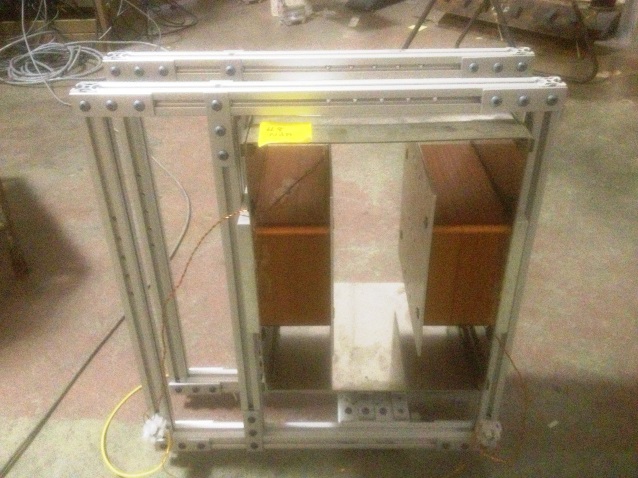 Photo of the first generation guide field
Photo of the first generation guide field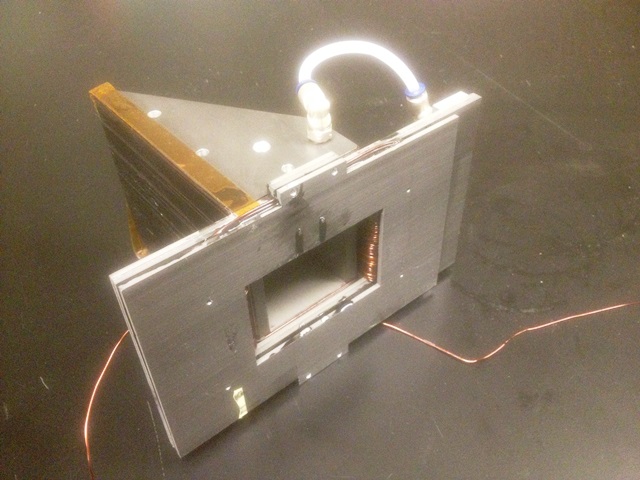 Photo of half part of the second generation
Photo of half part of the second generation Wollaston prism under construction
• Design and Simulation
Our goals in designing neutron Wollaston prisms are:
• 1. To preserve the polarization of a neutron beam with the largest possible area and divergence
• 2. To induce a Larmor phase for each neutron that depends only on the direction of travel of the neutron through the prism
• 3. To reduce transmission losses as much as possible.
We have found that Hall probe measurements on actual solenoids wrapped with aluminum wire can be well-described by a simple model of superposed current sheets, making calculation of Larmor aberrations straightforward. Within this model, goal #2 above is satisfied by symmetry for any neutron whose trajectory coincides with the optic axis of the device [1]. We find that aberrations in Larmor phase for off-axis neutrons tend to cancel within and between adjacent Wollaston prisms [2], as shown in the right-hand figure below.
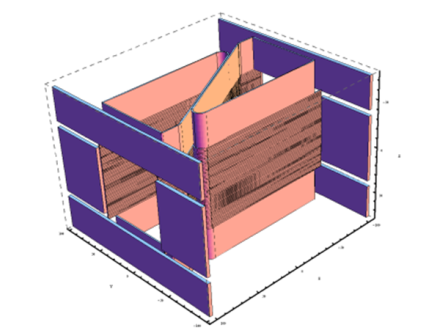 Representation of the current sheets that make up the
Representation of the current sheets that make up theWollaton prism in the numerical calculation
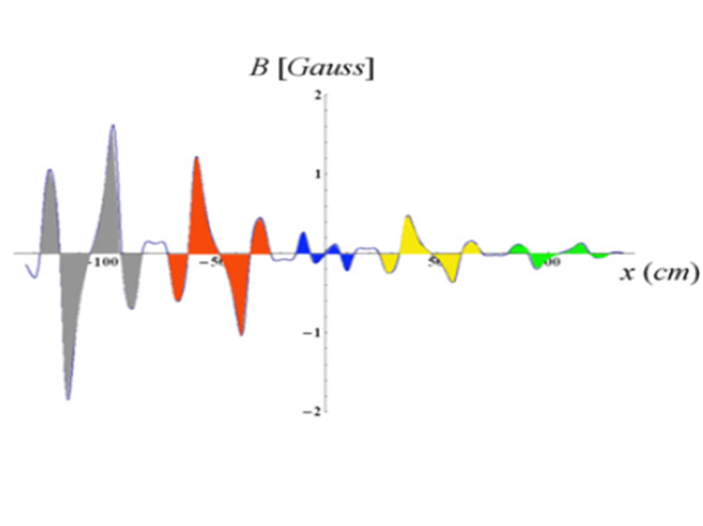 Aberrations in magnetic fields along an oblique path through a prism. The integral of this curve is nearly zero
Aberrations in magnetic fields along an oblique path through a prism. The integral of this curve is nearly zero (areas with like colors tend to cancel).
The efficiency of the Wollaston prisms can be increased by controlling careful design of the wire screens that form the boundary between the adjacent triangular solenoids that make up each Wolalston prism. The vector magnetic field near this boundary can vary significantly across the neutron beam, leading to a potentially large loss in polarization. By controlling the size, shape, and position of wires used to wind the solenoids, we can reduce unwanted depolarization through each solenoid and therefore the entire SESAME apparatus (see Figures below).
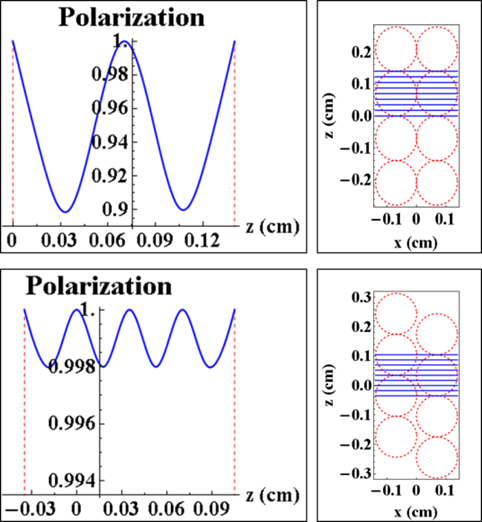
Predicted final polarization (left) for neutrons passing through wire screens (right).
The red dashed lines depict the cross section of the current carrying wires. Blue lines represent sampled neutron paths. Symmetric current sheets (top) have a much lower flipping efficiency than current sheets with interdigitated wires (bottom).
References:
1.The use of symmetry to correct Larmor phase aberrations in spin echo scattering angle measurement; R. Pynn, W. T. Lee, et al.; Rev. Sci. Inst (2008), Vol. 79(6): 063901-063908.
2. Some recent results using spin echo resolved grazing incidence scattering (SERGIS) ; R.Pynn, R. Ashkar, et al.; Physica B (2011) 46(12): 2350-2353.
3. Elastic Neutron Scattering Measurements Using Larmor Precession of Polarized Neutrons; Rekveldt, M., W. Bouwman, et al.; Springer Berlin / Heidelberg (2003) 601: 87-99
Related Resources:
coming soon......